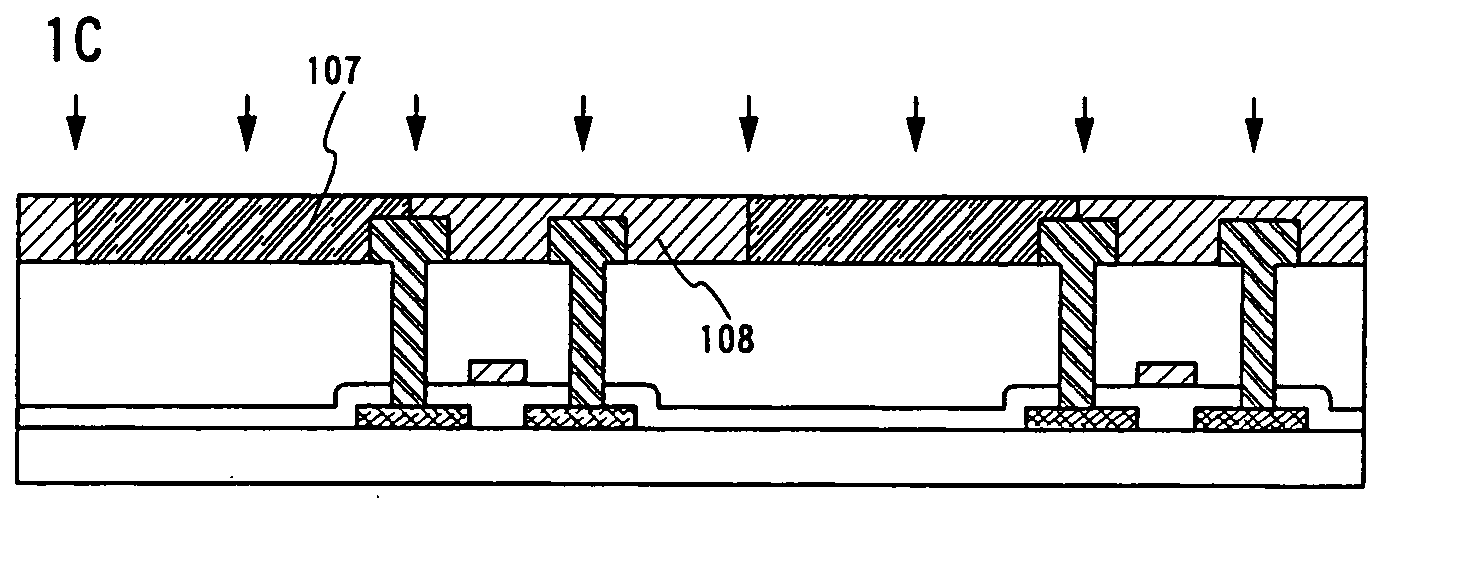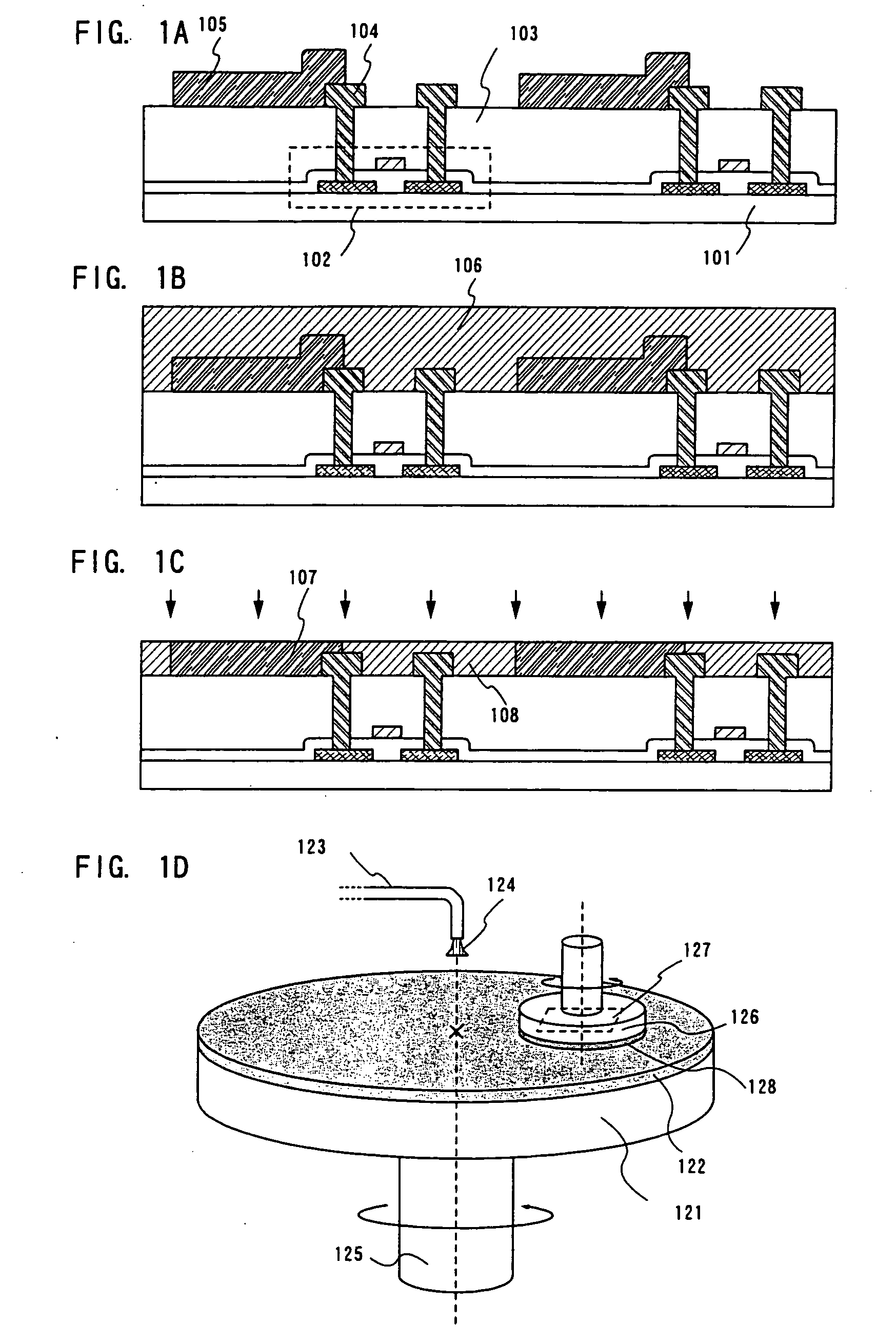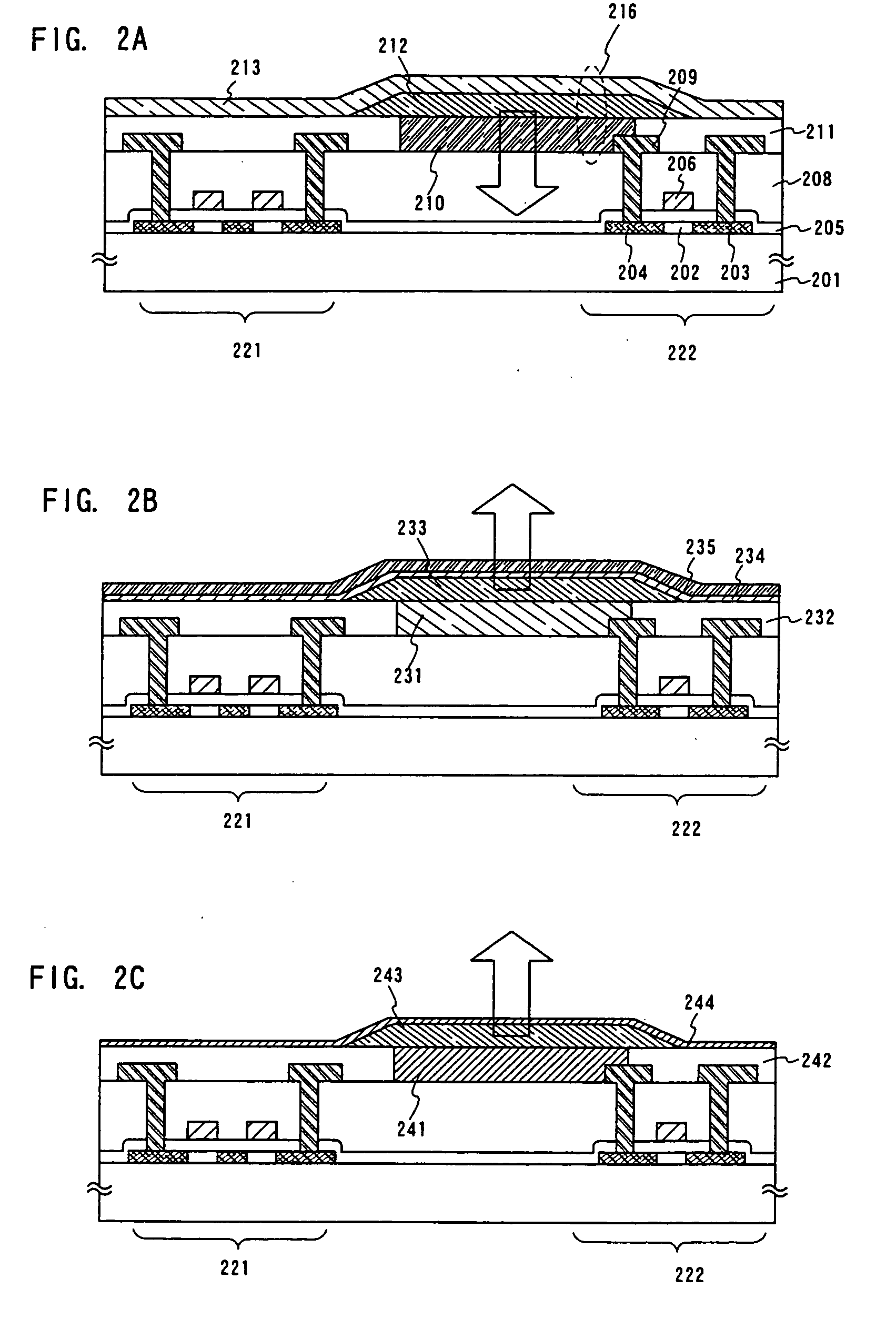Light emitting device and manufacturing method thereof
a technology of light-emitting devices and manufacturing methods, which is applied in the direction of thermoelectric devices, identification means, instruments, etc., can solve the problems of electrode deterioration, film formation irregularities may develop, and organic compound layer formation, so as to prevent film deposition deterioration
- Summary
- Abstract
- Description
- Claims
- Application Information
AI Technical Summary
Benefits of technology
Problems solved by technology
Method used
Image
Examples
embodiment mode 1
[0115] A cross sectional structure of a pixel portion of a light emitting device formed as Embodiment Mode 1 of the present invention is shown in FIG. 2A.
[0116] Thin film transistors (TFTs) are formed on a substrate 201 in FIG. 2A. Note that there are shown here, an electric current control TFT 222 which is electrically connected to a first electrode 210 of a light emitting element 216, and which has a function for controlling electric current supplied to the light emitting element 216, and a switching TFT 221 for controlling a video signal applied to a gate electrode of the electric current control TFT 222.
[0117] A glass substrate is used for the substrate 201 as a substrate having light transmittance here, and a quartz substrate may also be used. Further, active layer of each TFT is provided with at least a channel forming region 202, a source region 203, and a drain region 204.
[0118] Further, a gate electrode 206 is formed covering a gate insulating film 205, and overlapping w...
embodiment mode 2
[0123] The following describe a sectional structure of a pixel portion of a light emitting device as Embodiment Mode 2 of the present invention, referring to FIG. 2B. The structure is formed is the same as in Embodiment Mode 1 except that the current-controlling TFT 222 is formed by an n-channel type. Thus, the structure formed after that the wiring 209 is formed is described.
[0124] On the first interlayer insulating film 208 is formed a first electrode 231 connected electrically to the source region or the drain region of the current-controlling TFF 222 by the wiring 209. In Embodiment Mode 2, the first electrode 231 is formed to be a cathode.
[0125] The organic compound layer 233 is formed on the first electrode 231, therefore, it is allowable to form a barrier layer 234 by a sputtering for preventing the damage of the organic compound layer 233 when the second electrode 235 is formed. For the barrier layer 234, copper phthalocyanine (Cu—Pc), gold, platinum or the like may be use...
embodiment mode 3
[0129] The following describe a sectional structure of a pixel portion of a light emitting device as Embodiment Mode 3 of the present invention with reference to FIG. 2C. The current-controlling TFT 222 is formed to be a p-channel type as same as in the Embodiment Mode 1. Thus, the structure formed after that the wiring 209 is formed is described.
[0130] On the first interlayer insulating film 208 is formed a first electrode 241 connected electrically to the source region or the drain region of the current-controlling TFT 222 by the wiring 209. In Embodiment Mode 3, the first electrode 241 is formed to be an anode. For forming the first electrode 241, a material having a large work function and functioning as an anode is used. Further, conductive materials having light-shielding effect and a high reflectivity are used to form the first electrode 241.
[0131] An organic compound layer 243 is deposited on the first electrode 241. A light emitting elements made of the second electrode 2...
PUM
 Login to View More
Login to View More Abstract
Description
Claims
Application Information
 Login to View More
Login to View More - R&D
- Intellectual Property
- Life Sciences
- Materials
- Tech Scout
- Unparalleled Data Quality
- Higher Quality Content
- 60% Fewer Hallucinations
Browse by: Latest US Patents, China's latest patents, Technical Efficacy Thesaurus, Application Domain, Technology Topic, Popular Technical Reports.
© 2025 PatSnap. All rights reserved.Legal|Privacy policy|Modern Slavery Act Transparency Statement|Sitemap|About US| Contact US: help@patsnap.com



